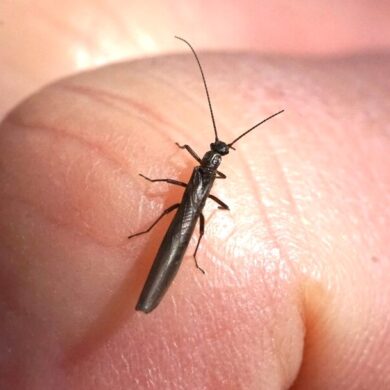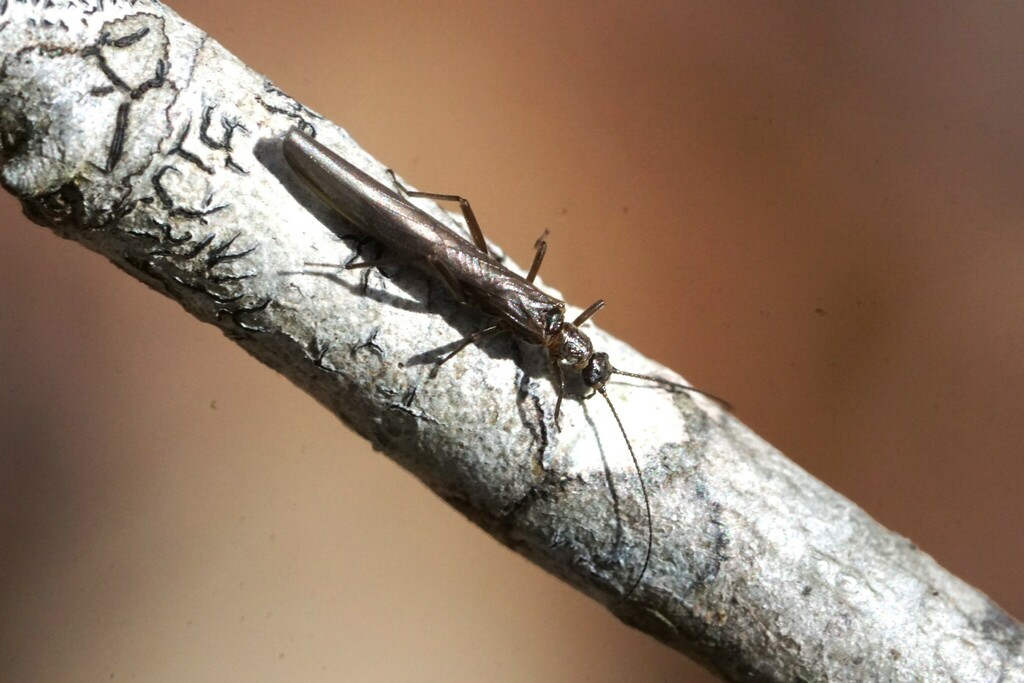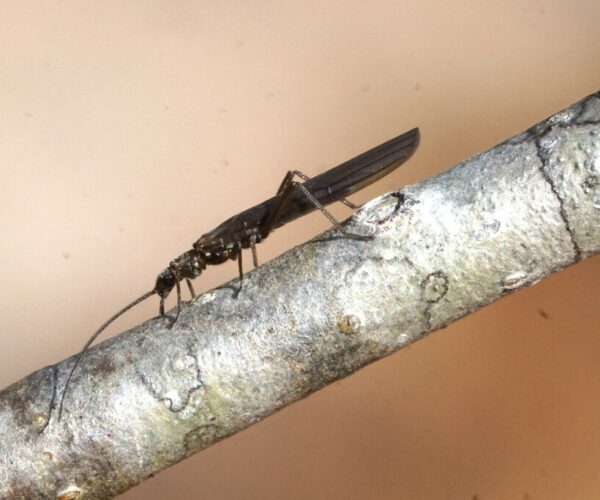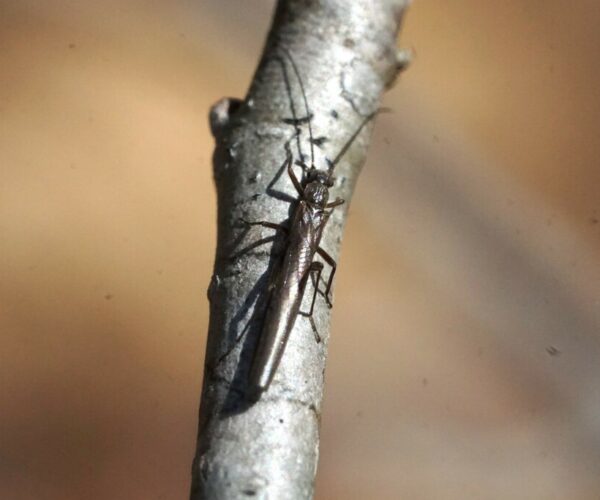
Rolled-winged Stoneflies
On March 10, 2024, a chilly day that nevertheless carried a hint of spring, I walked along the trail that parallels the Mill Brook at the Martha’s Vineyard Land Bank’s Waskosim’s Rock Reservation. Noticing an insect flying weakly across the trail in front of me, I tracked its flight and marked where it landed on a twig beside the trail. My first glance at the perched insect, about a half-inch long, amazed me: this was clearly an adult stonefly, a member of a taxonomic order that I had never before encountered! I wasted no time getting to work with my camera.
It isn’t so much that stoneflies (the order Plectoptera) are truly rare. In fact, many of my friends on the mainland encounter them routinely, often at night at porch lights or blacklight set-ups erected to attract nocturnal insects. But stoneflies generally associate with fast-moving, well-oxygenated streams, a habitat that is rather limited on the Vineyard. The iNaturalist observation I created from the photos I took is only the second Vineyard observation for this order; the other, not coincidentally, came from not far away along the same stream.
Like a surprising number of insects, the stoneflies exhibit a partially aquatic life history: larval stoneflies inhabit cool, energetic, well-oxygenated streams with good water quality. They feed, according to information on Bugguide, “on algae, diatoms, mosses, and immature aquatic invertebrates, including mayflies and midges.” Depending on the species, stoneflies may spend as long as three years in their larval stage and progress through 20 or more developmental stages before reaching maturity. Adults are relatively short-lived, and adults of many types of stoneflies are incapable of feeding. So the larval stage is, ecologically, the important one, and the winged but weak-flying adults mainly serve to disperse, mate, and lay eggs.
Stoneflies and other insects with freshwater aquatic larvae have been studied pretty extensively in the Vineyard’s Mill Brook watershed, with much of the fieldwork and even more of the identification work done by biologist Greg Whitmore. Other watersheds have been studied much less intensively or not at all, raising the possibility that some exciting discoveries remain to be made. Some groups of these insects, notably the caddisflies (Trichoptera), are numerous and quite diverse on Martha’s Vineyard. Other groups, including the stoneflies, are less so (I can find Vineyard records for only five Plecoptera species). Many of these insects are attracted to light at night, so fishflies (members of the order Megaloptera) and, especially, caddisflies, can be plentiful at porch lights and moth sheets. They’re presumably plentiful as aquatic larvae, too, though studying them effectively at that life stage requires specialized sampling and identification skills.
Identification of Plecoptera, as with many of the half-aquatic insect groups, is best done from larvae; adults can be hard to identify, especially if you’re working just from photographs. So it’s not surprising that I was unable to get very far identifying my stonefly from Waskosim’s Rock: it’s a “rolled-winged stonefly,” a member of the family Leuctridae, based on the distinctive form of its wings, but beyond that, I have no idea what I photographed. But this odd insect was a welcome early-season find, and it has piqued my interest in the ecology of all the insects that start their lives as aquatic animals.
Matt Pelikan is the director of the Martha’s Vineyard Atlas of Life project at BiodiversityWorks. He has never met an insect he didn’t like.


